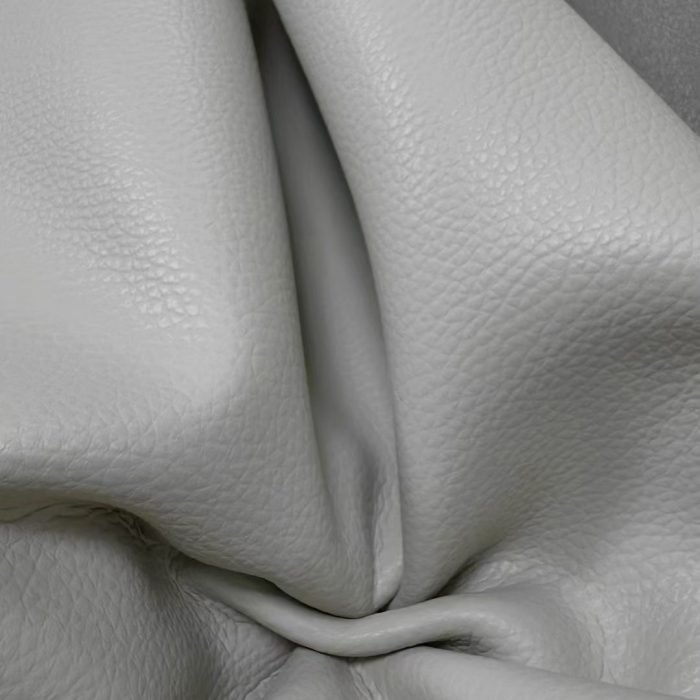Why Daily Cleaning is Essential for Faux Leather?
Faux leather is a popular choice for its durability and chic look, but without proper care, it can lose its appeal over time. Daily cleaning is crucial to prevent dirt, oils, and stains from settling into the material, which can lead to permanent damage and wear.
By incorporating a quick and easy cleaning routine, you can protect your faux leather items from cracking, fading, or peeling.
This guide provides practical, step-by-step instructions to help you maintain the pristine condition of your faux leather furniture or accessories.
From using gentle cleaning solutions to avoiding harsh chemicals, you’ll learn how to keep your faux leather looking as good as new.
Regular maintenance not only enhances the aesthetic appeal but also extends the lifespan of your faux leather products, saving you money in the long run.

Synthetic Leather Ultimate Care Tips for Long-Lasting Beauty
Deep Cleaning Synthetic Leather – A Step-by-Step Guide
Keeping your synthetic leather items clean and pristine doesn’t have to be a challenge. Our step-by-step guide makes deep cleaning simple and effective, ensuring your furniture, car seats, or accessories look brand new.
Gather Supplies: Use a mild soap, microfiber cloth, soft brush, and water. Avoid harsh chemicals that can damage the material.
Dust Off: Wipe the surface with a dry cloth to remove loose dirt and debris.
Clean: Mix a few drops of mild soap with warm water. Gently scrub the surface with a soft brush or cloth, focusing on stains or heavily soiled areas.
Rinse: Wipe away soap residue with a damp cloth to prevent buildup.
Dry: Pat the surface dry with a clean towel and let it air dry completely.
Condition: Apply a synthetic leather conditioner to restore softness and prevent cracks.
Regular deep cleaning not only enhances the appearance of your synthetic leather but also extends its lifespan. Say goodbye to stubborn stains and hello to a fresh, luxurious look!
Tailor-made for your design needs and project specifications
Contact Us For Faux Leather Full Catalogue
Artificial Leather vs. Genuine Leather – Key Differences in Care
Choosing between Artificial and genuine leather? Understanding their care differences is key to keeping your items in top condition.
Cleaning:
Artificial Leather: Use mild soap and water for regular cleaning. Avoid harsh chemicals to prevent damage.
Genuine Leather: Requires specialized leather cleaners and conditioners to maintain its natural oils.
Stain Resistance:
Artificial Leather: More resistant to stains and easier to clean.
Genuine Leather: Prone to stains; immediate blotting and proper cleaning are essential.
Durability:
Artificial Leather: Less prone to cracking but can peel over time.
Genuine Leather: Develops a patina with age but needs regular conditioning to prevent cracks.
Cost and Maintenance:
Artificial Leather: Affordable and low-maintenance.
Genuine Leather: Higher cost and requires more care to preserve its quality.
By understanding these differences, you can choose the right cleaning methods and products, ensuring your leather items – whether artificial or genuine – stay beautiful and durable for years.
Common Mistakes to Avoid When Cleaning Immitation Leather
Cleaning imitation leather requires care to maintain its appearance and longevity. Avoid these common mistakes to ensure your faux leather stays in top condition:
Using Harsh Chemicals: Avoid ammonia, bleach, or strong solvents, as they can strip the material’s finish, causing cracks or discoloration. Opt for mild soap and water instead.
Over-Wetting the Surface: Excessive water can seep into the material, leading to warping or mold. Always use a damp cloth, not a soaking wet one.
Skipping Spot Tests: Always test cleaning products on a small, hidden area first to prevent unexpected damage or color fading.
Ignoring Regular Cleaning: Dirt and oils can build up, making stains harder to remove. Clean spills immediately and dust regularly.
Using Abrasive Tools: Scrubbing with rough brushes or sponges can scratch the surface. Use a soft microfiber cloth for gentle cleaning.
Skipping Conditioning: While imitation leather doesn’t need conditioning as often as real leather, occasional use of a faux leather conditioner can prevent drying and cracking.
By avoiding these mistakes, you can keep your imitation leather looking fresh and durable for years. Proper care saves you time and money while preserving its aesthetic appeal.
Contact Us for Complete Faux Leather Samples
Tailor-made for your design needs and project specifications
Seasonal Care Tips for Faux Leather
Faux leather is durable and stylish, but seasonal changes can affect its condition. Follow these tips to keep it looking great year-round:
Winter Care: Cold, dry air can cause faux leather to crack. Keep it away from direct heat sources like radiators and use a faux leather conditioner to maintain moisture.
Summer Care: High humidity and heat can lead to stickiness or mold. Store items in a cool, dry place and wipe them down regularly with a damp cloth to remove sweat or dirt.
Spring Cleaning: Dust and pollen can accumulate. Use a soft microfiber cloth to gently clean surfaces and avoid harsh chemicals that may damage the material.
Fall Maintenance: As temperatures drop, ensure your faux leather items are stored properly. Avoid prolonged exposure to moisture, which can cause warping or mildew.
Year-Round Tips: Protect faux leather from direct sunlight to prevent fading. Clean spills immediately with a mild soap solution, and avoid abrasive tools that can scratch the surface.
By adapting your care routine to the seasons, you can extend the life of your faux leather and keep it looking like new. Proper maintenance saves you from costly replacements and ensures your items remain stylish and functional.
Stain Removal Techniques: How to Remove Stains from Synthetic Leather?
Accidents happen, but removing stains from synthetic leather doesn’t have to be stressful. Follow these effective techniques to restore your faux leather’s appearance:
Act Quickly: Blot spills immediately with a clean, dry cloth to prevent the stain from setting. Avoid rubbing, as it can spread the stain.
Use Mild Soap and Water: For most stains, mix a few drops of mild soap with water. Gently wipe the stained area with a damp microfiber cloth, then dry with a soft towel.
Ink Stains: Dab rubbing alcohol on a cotton swab and gently blot the stain. Avoid excessive rubbing to prevent damage.
Oil-Based Stains: Sprinkle baking soda or cornstarch on the stain to absorb the oil. Let it sit for 15 minutes, then wipe away with a damp cloth.
Tough Stains: For stubborn marks, use a specialized synthetic leather cleaner. Always spot-test first to ensure it won’t damage the material.
Avoid Harsh Chemicals: Bleach, ammonia, or acetone can strip the finish and cause discoloration. Stick to gentle cleaning solutions.
By using these techniques, you can effectively remove stains and keep your synthetic leather looking pristine. Quick action and the right tools are key to maintaining its durability and aesthetic appeal.


